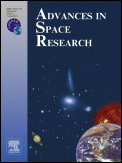
Satellite Altimeter Calibration and Deformation Monitoring using GNSS
Papers are invited for a special topic issue of Advances in Space Research (ASR) entitled “Satellite Altimeter Calibration and Deformation Monitoring using GNSS”.
Global warming is a key scientific issue nowadays. Over the past decades, satellite altimetry has provided an unprecedented amount of data for monitoring sea level changes and thus global warming. Such scientific results however rely on a significant number of geophysical corrections as well as on continuous monitoring of the satellite altimeter performances using in-situ data. A few calibration sites around the world provide accurate calibration of satellite altimeters using different in-situ techniques involving monitoring of geodetic instruments close to the satellite tracks or at crossing points (platforms, tide gauges, buoys, etc.). While Global Navigation Satellite Systems, such as GPS, are key tools for geodetically monitoring the vertical velocity of such calibration sites, several scientific issues are still under consideration, as vertical positioning is still difficult to obtain in an absolute sense. Furthermore, new satellite altimeters, such as delay-Doppler, wide swath, etc., will soon provide new types of observations for sea-level monitoring and allowing altimetry to be closer at the coastal regions, for which new types of calibration could be foreseen.

This Special Issue is open to all scientists discussing new scientific challenges in satellite altimeter calibration (technical aspects related to the altimeter functioning, description of current calibration sites and current techniques, or global satellite calibration using networks of tide gauges or GNSS networks), as well as current limitations in deformation monitoring (monitoring of the vertical, use of regional and continuously-operating GNSS networks, reference issues when expressing vertical velocities in global, regional or local frames). Paper addressing topics related to natural hazards would also be welcome.
Papers must be submitted electronically through the EES/Elsevier Web system at http://ees.elsevier.com/asr. To ensure that all manuscripts are correctly identified for inclusion into the Special Issue, authors must select “Special Issue: Altimetry Calibration”, when they reach the “Article Type” step in the submission process.
Submitted papers must be written in English and should indicate full affiliation addresses for all authors. All manuscripts will be subject to a standard peer-review process, including at least two independent reviewers. There are no page limits, but the length of the paper should be appropriate to the scientific material being presented. Manuscripts should follow the general format used in ASR:
(http://www.elsevier.com/wps/find/journaldescription.cws_home/644/authorinstructions). The deadline for submission is 15 January 2012.
Manuscripts will be accepted on a paper-by-paper basis and available on-line with a DOI a few days after acceptance. Contributors to this issue will have an opportunity to purchase individual issues once the issue is finalized. All articles will be typeset at no cost to the author, while a nominal fee will be charged to the authors for color figures in print, but not in the electronic version.
Dr. Pascal Willis () is the Guest Editor for this Special Issue. Authors will be regularly informed on the progress of this Special Issue by email until its final publication. Questions can be directed to Pascal Willis or to the Co-Editor for Special Issues, Dr. Peggy Ann Shea (sssrc@msn.com).












